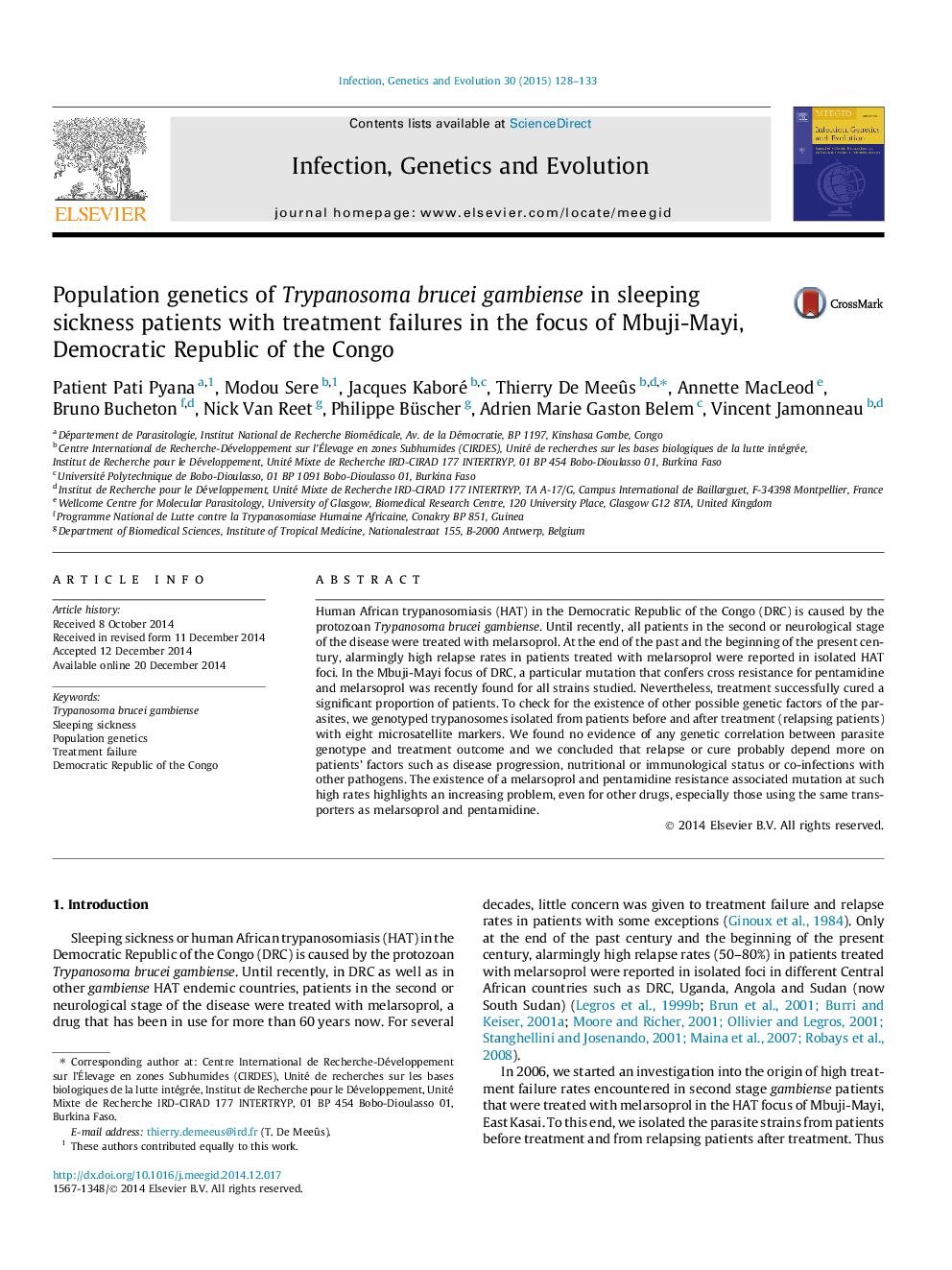| کد مقاله | کد نشریه | سال انتشار | مقاله انگلیسی | نسخه تمام متن |
|---|---|---|---|---|
| 5908778 | 1570173 | 2015 | 6 صفحه PDF | دانلود رایگان |

- Melarsoprol resistance of trypanosomes is an increasing concern for control agents.
- In RDC, all trypanosome strains harbor mutations conferring such resistance.
- Nevertheless, some melarsoprol treated patient got cured.
- There was an absence of correlation between cure and genotypic profile of trypanosomes.
- In that context, cure probably results from interactions between treatment and individual patient.
Human African trypanosomiasis (HAT) in the Democratic Republic of the Congo (DRC) is caused by the protozoan Trypanosoma brucei gambiense. Until recently, all patients in the second or neurological stage of the disease were treated with melarsoprol. At the end of the past and the beginning of the present century, alarmingly high relapse rates in patients treated with melarsoprol were reported in isolated HAT foci. In the Mbuji-Mayi focus of DRC, a particular mutation that confers cross resistance for pentamidine and melarsoprol was recently found for all strains studied. Nevertheless, treatment successfully cured a significant proportion of patients. To check for the existence of other possible genetic factors of the parasites, we genotyped trypanosomes isolated from patients before and after treatment (relapsing patients) with eight microsatellite markers. We found no evidence of any genetic correlation between parasite genotype and treatment outcome and we concluded that relapse or cure probably depend more on patients' factors such as disease progression, nutritional or immunological status or co-infections with other pathogens. The existence of a melarsoprol and pentamidine resistance associated mutation at such high rates highlights an increasing problem, even for other drugs, especially those using the same transporters as melarsoprol and pentamidine.
In this figure, trypanosome strains from relapsed patient after melarsoprol treatment are underlined and are evenly distributed across the tree.161
Journal: Infection, Genetics and Evolution - Volume 30, March 2015, Pages 128-133